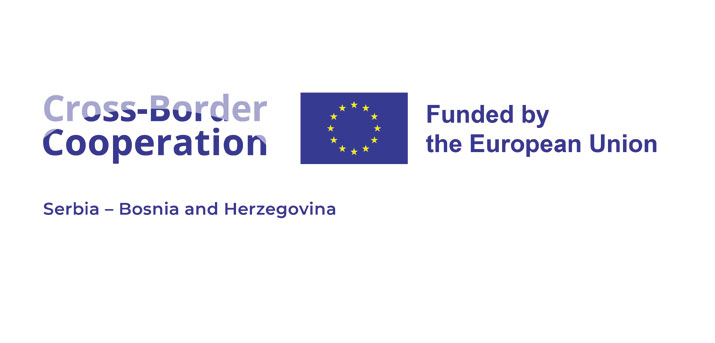Measure I.1– Improving the productivity and competitiveness of the area’s economic, rural and environmental resources.
Project Title: Development of Typical Products in North East Bosnia and Zlatibor County in Serbia
Project Budget:
| Project Value | EU Contribution | |
| Republic of Serbia | € 102,089.00 | € 84,733.87 |
| Bosnia and Herzegovina | € 109,744.94 | € 90,744.94 |
| TOTAL | € 211,833.94 | € 175,478.81 |
Beneficiary of funds in the Republic of Serbia: Regional development agency “Zlatibor”
Beneficiary of funds in Bosnia and Herzegovina: Independent office for Development (NBR)
Partners:
Area of implementation:
- Serbia: Zlatibor County
- Bosnia and Herzegovina: North-East region
The target groups of the project: The producers of typical products in cross-border area,
150 representatives of organization and institutions and 100 entrepreneurs
Project duration: NBR: 28.06.2011-27.02.2013
RDA Zlatibor: 1.07.2011-28.02.2013
Project objectives:
The overall objectives: Protecting typical products in the target region in line with EU standards and their wide commercialisation
The specific objectives of the project: Making products from NE Bosnia and Zlatibor County visible in wider region and their protection more feasible
Activities and results of the project:
Main focus of the Project was protecting traditional food and handcrafts, renewing old customs and traditions in the targeted cross-border area, increasing sales, providing possibilities for access to new markets and developing an attractive tourist offer.
In the first phase of the Project, mapping of typical products was done, key actors of typical products development was identified: producers and their associations, institutions and organizations and representatives of local self-governments. In order to provide participative approach and collect relevant information and data, 4 workshops with relevant stakeholders were held.
In the second phase of the project were analysed traditional products. Relevant experts from different fields selected 12 typical products with the greatest potential for further development. Two round tables were held. Wider public was introduced with research and analysis results through two Public presentations. Project Partners created and printed Common publication “States and perspectives of typical products development in North East Bosnia and Zlatiborski County”. The first public presentation of publication was done during the Conference held in BIH. Project Partners signed Protocol on cooperation and friendship. Also, Agreement on establishing networks for development of typical products was signed. Agreements were the basis for creating Cross border network for development of typical products in North East Bosnia and Zlatiborski County.
Associations and producers of traditional products were supported to increase their capacities and knowledge on important aspects in valorisation and development of typical products. The study tour in East Herzegovina for 20 representatives, 8 training sessions, 2 workshops were organized.
A common Guide to Improving traditional products manufacturing was printed. This Guide contains very useful advices and recommendations for the beginners in business, providing information for productions, safety of food, good production and hygiene practice, but also gives ideas for future steps aiming protection of these products.
Project activities were promoted through project and final conference and other organized events: fairs, exhibitions and manifestations related to the typical products. All mentioned events were followed up by local and regional media. Articles on project activities were published in local, regional and national newspapers, as well as on web portals and partners’ websites.
Improved cooperation and capacities of associations and producers of traditional products created favourable conditions for long term development. Customers are ready to pay a higher price for these products. Traditional food and handcrafts are seen as guarantors of high quality, origin and tradition. Protecting them is crucial because they are an important cultural and regional resource.





